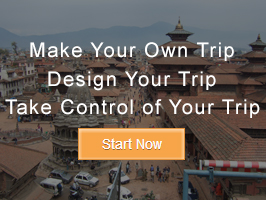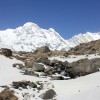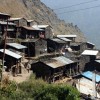Festivals Tours Nepal
Trip Highlights
About The Trip
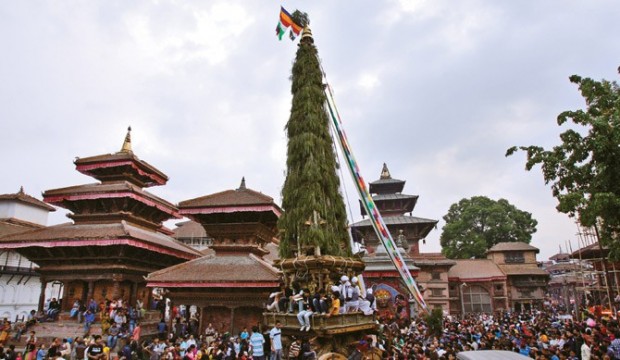
Festivals Tours in Nepal are very interesting. As there are hundreds of diverse festivals in Nepal, it has been called as the land of festivals which are a living part of cultural heritage. The official calendar adopted by the Bikram Sambat (B.S). The Bikram Sambat New Year beings with the month of Baisakh (mid-April), for all religious festivals and auspicious personal events and rituals, Nepalese make use of the lunar calendar. Religion plays very vitals roles in all festivals in Nepal, whether Hindu and Buddhists .certain festivals are celebrated nationwide while others are of a local nature, observed within a certain region or community. Based on this, Nepalese festivals can be broadly classified into three categories: those that are celebrated nationwide, regionally or locally, and by the community. Majors festivals like Bada Dashai or Durga puja, Tihar, or laxmi Puja, Buddha Jayanti, or the birth anniversary of Lord Buddha, shiva Ratri, Janai purnima , Ram Navami, Teej, Krishna Janmasthami are celebrated all over the country.
Nepalese celebrates festivals with great enthusiasm and élan. It is said that hardly a day passes in Nepal without a festivals being celebrated somewhere.
- Itinerary Details
- Cost Included/Excluded
- Photo Gallery
Baisakh Poornima (Birth day of the Lord Buddha): This is a full moon day. Nepal is the birth place of the Lord Buddha. This day is very important for the Nepalese people & Buddhist. Because this is the triple anniversary of the Buddha’s birth, enlightenment and death
Rato Machchhendranath Rath Jatra: This is the biggest socio-cultural festival of Patan. This festival falls in May-June. The main deity named as Rato Machchhendranath is kept inside the wheeled chariot and dragged through the city of Patan. It is important for the Hindu & Buddhist. Legend: said that, when Guru Gorakhnath visited Patan, he captured all the rain showering serpents of Patan and started to meditate after he was disappointed by the locals as they did not grant him any alms on his request. As a result, Patan faced drought for a long time. The then king of Patan, on the advice of his advisers, invited Machchhandranath, Guru of Gorakhnath, to Patan. When Gorakhnath learned that his teacher was in Patan he released all the rain showering serpents and went to see him. As soon as the rain showering serpents were set free, Patan again got plenty of rainfall every year. After that day, the locals of Patan worshiped Machchhindranath as the god of rain.
Dumje: This festival is celebrated by the Sherpa in July. The Dumji Festival is a very special festival in the Khumbu area. It is celebrated in the month July every year. During the celebration, there is dancing, drinking and merry making in addition to the more serious rituals and dances performed by the monks. The Dumji festival celebrates and honors the anniversary of Guru Rinpoche’s birth on the lotus flower.
Lama Sangwa Dorgje is the founder of the earliest monasteries of Khumbu and he was the first to start the Dumji festival in Pangboche about 360 years ago in order to coincide with the birth anniversary of Guru Rimpoche.
Gaijatra (cow festival): This festival falls in the month of July-August. This festival is celebrated with dancing, singing and comedy that cause mirth and laugh. , the modern form of celebration of Gai Jatra came into existence in the medieval period of Nepal during the reign of Malla Kings. The present form of Gai Jatra with humorous acts, parody, comedy and was started by then King of Kathmandu Pratap Malla. The festival of cows is one of the most popular festivals in Nepal. It is said people in ancient time started worshiping Yamaraj,”the god of death” on this day.
Krishnastami: This day is the birthday of the Lord Krishna and it falls in the month of July-August. Hundreds of people visit the Krishna temple in Patan on this day. Janmashtami is celebrated with pomp and gaiety by Hindus all over Nepal, to commemorate the birth of Lord Krishna. Also referred to as Krishnashtami, The celebration revolves around the story of the birth of Lord Krishna. Special Janmashtami puja is organized on the day. People enjoy cooking mouthwatering food, to celebrate the birth of their favorite deity. Small children are dressed like the young Krishna and his playmate Radha. Songs are sung to praise Lord Krishna. At times, story of Lord Krishna is also recited during cultural programs.
Indra Jatra: This festival belongs to the god Indra, the god of rain. This festival falls in August–September. It is the biggest religious street festival in kathmandu, Nepal. Yenya means “Kathmandu festival” in Nepal Bhasa. The celebrations consist of two events. Indra jatra is marked by masked dances of deities and demons, displays of sacred images and tableau in honor of the deity India, the king of heaven. The other event is kumara jatra the chariot procession of the living goddess kumara.
Family members deceased in the past year are also remembered during the festival. The main venue of the festivities is Kathmandu Durbar square. The celebrations last for eight days from the 12th day of the bright fortnight to the 4th day of the dark fortnight of the eleventh month in the lunar Nepal Era calendar.
Indra Jatra was started by king Gunakamadeva to commemorate the founding of the city of Kathmandu in the 10th century; Kumari Jatra began in the mid-18th century. The celebrations are held according to the lunar calender, so the dates are changeable.
Dashain or Durga Puja: Dashai is the biggest festival of Nepali people. Dashain is a ten-day festival, celebrated entire the country in September-October. People worship the nine different incarnations of goddess Durga in Dashain. Dashain is the biggest festival for the Hindus. The followers of Shakta cult take it as the day of falling of demon Mahishasur by goddess Durga. For non-Shakta Hindus, this festival symbolizes the victory of Rama over Ravana, the characters of the epic Ramayan. The Buddhists remember this day as Asoka of the Indian subcontinent abandoned violence on this day and entered the path of Buddhism.
Tihar (Deepawali): This is the festival of brother and sister. Lights are illuminated at night in Tihar that is celebrated for five days in October-November. Tihar, the festival of lights, which is usually celebrated in five stages starting the thirteenth day of the waning moon in October or early November, is the second biggest festival of the Hindus. Unlike other Hindu festivals, instead of worshipping only the Gods and Goddesses of heaven, the festival has a unique culture of worshipping Yamaraj, the Lord of Hell, as well. Also known as Yamapanchak, the five days of Tihar are dedicated to both Laxmi and Yamaraj. Yamaraj’s henchmen—crow and dog—as well as Laxmi is worshipped during Tihar (also known as Deepawali)
Maha Shivaratri: This festival belongs to the Lord Shiva, the supreme god of Hindu and it falls in the month of February-March. Maha Shivratri is associated with the marriage of Shiva and Shakti.
The legends signify that this day is the favorite of Lord Shiva and also throws light on his greatness and the supremacy of Lord Shiva over all other Hindu Gods and Goddesses.
Maha Shivaratri also celebrates the night when Lord Shiva performed the ‘tandava’, the cosmic dance.
According to another legend of samundra manthan, Shiva saved the world from the disastrous effects of a poison that emerged as a byproduct of the churning of the sea (Samudra manthan), by consuming the whole of the poison. Shiva could arrest the poison in his throat by his Yogic powers and it didn’t go down his throat. His neck turned blue due to the effect of the poison on his throat and henceforth he is also known as Neela Kantha or The Blue Throated
Teej: Teej is the festival of Hindu women. Women take fast on this day. The married women pray for a happy conjugal life and unmarried women for a good husband. Women in red dress dance and sing in the temples in Teej is a festival celebrated in Nepal and by Khas women of Nepal. It is observed by women for wellness of their husband.
Literally, “teej” means “third”. Therefore Teej falls on the third day after the moonless night and the third day after the full moon night of every month. However, the third day after the new moon or Amavasya of shraavana month is the most important Teej. As Sraawan month falls during monsoon or rainy season when the surroundings become green, the Shraavana Teej is also called Hariyali Teej
Teej is celebrated in Nepal It falls on the third day after the new moon of the Sraawan month of Hindu calender in late July to early August. Dedicated to the Goddess parvati, commemorating her union with Lord shiva, the festival is celebrated for sexual bliss, well-being of spouse and children and purification of own boy and soul. The festival is a three-day-long celebration that combines sumptuous feasts as well as rigid fasting
Cost Included
Cost Excluded
You may also like
-
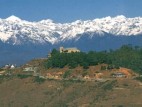
Sunrise & Sunset Tours
Nagarkot is by far from the most favoured hill station in the Kathmandu Valley. Nagrakot is a popular Tourist destination in Nepal. Nagarkot is situated 32 KM east of kathmandu at an altitude of 2175 masl. There are various places around the edge of…Read More -
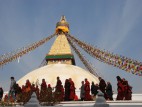
Buddhist Pilgrimage Tour
Lord Buddha was born in the western Nepal. This is the place belongs definitely in the Buddhist pilgrimage Tours in Nepal, Lumbini is the most famous destination for visited. Buddha, An idol of peace and harmony all over the world since two millennium. King…Read More -
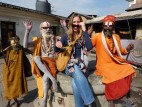
Culture Tours
Cultural tolerance has been the quintessence of Nepalese way of life. Nepal remains one of the most peaceful multi-religions, multi-ethnic and multi- cultural countries in the world. Cultural is modal of behavior, which is a constant process of…Read More -
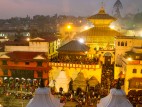
Hindu pilgrimage Tours
Hindu pilgrimage package tour is a perfect Tours package to be spent in Nepal. Hindu Pilgrimage Tour features the most popular and most fascinating destinations of Nepal and this is a perfect Tours package for Hindu people from all over the world.…Read More -
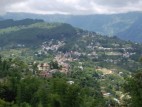
Kathmandu and Dharan
Dharan is a situated right at the foot of hills, but the transformation when coming from Terai is dramatic. Dharan is the famous for the Buda Subba temple. The bamboo trees found in the budhasubba temple area don’t have the top end portions. Young girls…Read More -
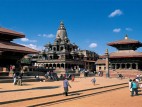
Kathmandu Valley Tour
Nepal is steeped in numerous legends, myths and folklore that are entwined with different facets of Nepalese life. Every temples, shrine or sacred place throughout the Nation has some legend to define us. Nepal is called land of the Gods. The Kathmandu…Read More -
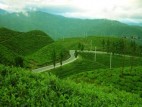
Kathmandu and Ilam Tours Packages
Kathmandu and Ilam Tours packages is the best dstination of the Nepal. Ilam is small hilly town with pristine landscapes of sloped tea gardens, thick natural forests, holy sites and unique culture. It offers excellent getaways from city life for romantic…Read More -
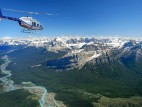
Kathmandu Heli (Helicopter) Tour
Kathmandu Heli Tour - Swayambhunath Stupa Kathmandu In the comfort of our helicopter you get to feast on the amazing aerial views of the cultural prides of Kathmandu valley; namely the Pashupatinath temple, Nagarkot, Swayambhunath temple, Kathmandu…Read More -

Honeymoon Tours in Nepal
Honeymoon is the golden period of your married life, which undoubtedly needs to be cherished in a memorable way. This undoubtedly needs to be cherished in a memorable way to spend few days in the lap of the Nature with your beloved, is totally marvelous…Read More
Nepal Information
Our Top Offers
-
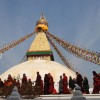
Buddhist Pilgrimage Tour
Lord Buddha was born in the western Nepal. This is the place belongs… Read More -
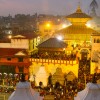
Hindu pilgrimage Tours
Hindu pilgrimage package tour is a perfect Tours package to be spent in… Read More -
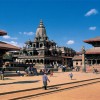
Kathmandu Valley Tour
Nepal is steeped in numerous legends, myths and folklore that are entwined… Read More


